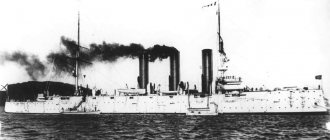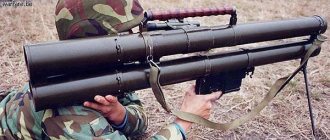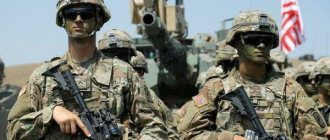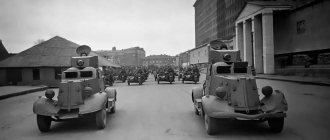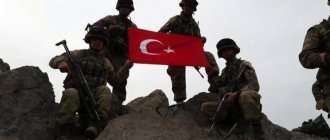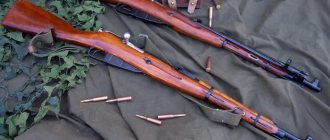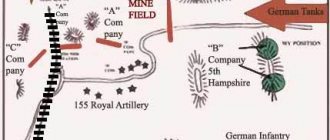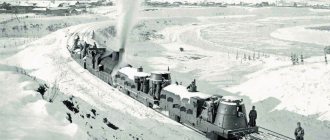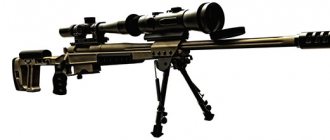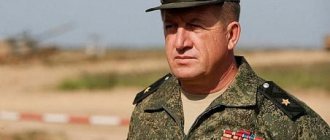Medium tank Mk A "Whippet"
Medium tank Mk A "Whippet"
The very first combat experience of British “diamond-shaped” tanks showed that heavy, slow-moving vehicles needed to be supplemented with a lighter and more mobile vehicle. One of the designers of the first British tanks, William Tritton (later awarded the nobility for his work), began its development on his own initiative.
On October 3, 1916, two and a half weeks after the Mk I heavy tanks first went into battle, Tritton, who had been at the Somme front, approached the Tank Supply Department with a proposal to supplement the heavy tanks with faster and less expensive vehicles. It was necessary to create a “fast” (“cavalry”) tank, which, together with the cavalry, could pursue the enemy, developing in depth the breakthrough made by heavy tanks. The proposal was approved on November 10, and on November 25 the War Ministry approved this decision. Development began on December 21 at the same site in Lincoln (Lincolnshire), where the first tanks were created. Tritton immediately focused on the low tracked contour. In November 1916, he submitted an application describing a machine that included one powerful engine installed in the middle part of the hull and a gearbox that transmitted rotation through final drives to the rear drive wheels. On the axis of each final drive, another driving short swinging caterpillar would be attached, playing the role of a “tail” to make it easier to overcome obstacles. Tritton soon abandoned the “active tail”. The chassis with a low tracked outline, an engine in the middle part and an openly installed double seat behind it was tested in the Tank Corps under the designation “Type A tractor”. But there was no time to implement such a project, and there were not enough necessary engines.
The work had to be done again quickly and at minimal cost. Tritton designed the chassis according to the type of the once rejected “Little Willie”, and in the power plant he used two ready-made 45-horsepower Taylor automobile-type engines with separate gearboxes; he abandoned the “active tail”. In essence, we were talking about a light armored car mounted on tracks (though with its own power plant on each side), which was also reflected in the layout of the tank with a front-mounted engine compartment. Armament was limited to one machine gun in a rotating single turret, borrowed from the Austin armored car and installed next to the driver's cabin. The car was assembled on February 3, 1917.
Diagram of the Tritton “pursuit tank” (aka “Chaser”, or “Tritton light vehicle No. 2”): 1 - starboard engine, 2 - port engine, 3 - clutches, 4 - gearboxes, 5 - worm gear pairs rotation on transverse shafts, 6 - transverse drive shafts, 7 - Hall chains, 8 - cam clutch with a delivery mechanism.
British patent by W. Tritton for "transport machine with endless track chains" dated 1919 (application filed November 1916).
On March 3, 1917, new tanks were tested in Oldbury, near Birmingham - six of them were heavy Mk II without sponsons, with new transmission systems, one gun transporter tank and one prototype of the high-speed “Tritton pursuit tank” (the so-called . "tank testing day"). The “Pursuit Tank” was presented under the motto “Chaser” (“pursuer”, as sea hunters were called in the English Navy), or “Tritton’s light vehicle No. 2”.
Soon, Field Marshal Haig demanded that these tanks be ordered with the first ready by the end of July 1917. But it was not until June that an order for 350 followed, soon reduced to 200 due to production costs. The tank was designated "medium" Mk A, and Tritton himself gave it the nickname "Whippet" (Whippet is a breed of hound, bred on the basis of the English greyhound and known for its remarkably fast running).
Difficulties immediately arose with the production of the turrets, and to speed up the process, they decided to abandon them, making a single fixed wheelhouse in the stern with machine gun installations around the perimeter, increasing the crew from two to four people - a commander, a driver and two machine gunners. The tank went into production in this form.
Projections of the Mk A Whippet medium tank.
The cabin of the Mk A tank, view from the left side.
Longitudinal sections (in vertical and horizontal planes) of the Mk A Whippet medium tank.
The driver was located in the wheelhouse on the seat on the right, the commander stood to his left in a niche protruding forward with a frontal machine gun mount. Due to the tightness of the cabin, the second machine gunner was usually abandoned, and his work was performed by the commander. For ventilation and observation of the commander, there was a hatch in the roof with a lid that folded forward. Behind there was a machine gunner serving the right or rear machine gun. Embarkation and disembarkation were carried out through the rear single-leaf door of the wheelhouse with a ball mount for a machine gun. The floor of the cabin was formed by a wooden flooring. The commander's niche and the roof of the long engine compartment severely limited the driver's visibility.
The tank carried four 7.7-mm Hotchkiss Mk 1* machine guns (adopted in June 1917 as a standard tank gun), of which three were mounted in ball mounts, one was a spare. The Hotchkiss machine gun was produced in Coventry under a French license, had an automatic gas engine, powered by a rigid belt with 30 rounds of ammunition, and an air-cooled barrel. Depending on the situation, the machine guns were easily rearranged from one installation to another. Loaded rigid cartridge belts (strips) were stacked in racks on the floor of the cabin. For firing from the crew's revolvers, there were holes with armored shutters.
The body was assembled by riveting and bolting on strips and corners of flat armor plates with a thickness of 14 to 5 mm. The protection of the frontal part of the cabin was somewhat increased by installing armor plates at design angles of inclination (in the vertical plane) and rotation (in the horizontal plane).
In the engine compartment, two in-line water-cooled Taylor JB4 carburetor engines were installed side by side parallel to the axis of the vehicle. Such engines were produced for London buses; Tritton chose them for their availability and the lack of a better one “at hand” (by the way, double-decker buses were also used by the British army to transport troops). Coolant supply is by pump. A single engine radiator installed in front was blown by two fans driven by Gall chains; air was sucked in through slits in the sides, covered with armored shutters. Gasoline is supplied to the engine cylinders using the “Vacuum” system.
The cabin of the Mk A tank. View from the starboard side. Inspection hatches and weapon installations are visible. The exit of the exhaust pipes directly to the wheelhouse clearly complicated the working conditions of the tank crew.
The cabin of the Mk A tank. Rear view. The cabin door is open. The rear mounting for the machine gun in the door is visible. Let us note how much the tracked contour protruded beyond the hull.
The front part of the caterpillar track and radiator shutters of the Mk A tank.
The cylindrical fuel tank was located in an armored box on the nose of the hull - on the one hand, it was as far away from the crew as possible, but on the other, it turned out to be very vulnerable, which could make the tank simply motionless under enemy fire. With a fuel consumption of approximately 0.21 km/l, a reserve of 378 liters was enough for no more than 70 km.
Access to the engines was through hinged top hatch covers, similar to cars of those years. The engines were started from a magneto or from one crank in the stern. Each engine was connected to its own gearbox, which set four speeds: I - 2.28, II - 4.95, III - 8.35, IV -12.8 km/h. The gearboxes located under the deckhouse floor also had a reverse mechanism. The output shaft of the gearbox through a worm pair rotated a transverse shaft, at the end of which a sprocket was attached, which drove the drive wheel of one side through a Gall chain. The cross shafts were mounted on bearings and equipped with band brakes. When moving in a straight line or one engine failed, the transverse shafts could be connected by a cam clutch, but the tank would then become uncontrollable. There was a special friction release mechanism that limited the power transmitted from one shaft to another to 12 horsepower. For a turn with a small radius, the driver turned off or braked one track; for a turn with a large radius, he closed the throttle of one engine and slightly opened the throttle of the other. When one track was turned on in forward motion and the other on the rear, the tank could rotate in place. The position of the throttle valves was controlled by the steering wheel. In addition to him, the driver operated the right and left clutch pedals, two onboard brake levers, two gearbox levers (both right and left), and a lock lever (on the left side). Tritton even patented a set of controls for a vehicle with two engines, each operating on its own track, along with other features of the design of his tank (the corresponding patents were received in 1919).
British patent of W. Tritton from 1919 for a drive and control circuit for a tracked vehicle with a power plant of two engines (application filed in January 1917).
British patent by W. Tritton from 1919 (application filed in December 1916) for the tracked undercarriage design used in the Whippet tank.
The caterpillar track with rigid suspension was assembled on armored frames along the sides of the hull. The chassis included on one side 16 dual steel road wheels (7 of them with flanges), the axes of which were rigidly attached along the arched lower contour of the frame, a front dual idler wheel with a screw mechanism for adjusting the track tension and a rear dual toothed drive wheel, as well as 5 support rollers. The caterpillar consisted of 67 large steel tracks.
The track was similar to the track tracks of the first heavy tanks; it was riveted together from a flat “shoe” and two rails along which the road wheels rolled; the bend of the “shoe” on one side of the track covered the connecting pin of the open hinge. Rollers of one “flanged” pair were connected by transverse bolts and pressed against the track rails with a helical spring; rollers without flanges were held on the rails using special plates, also pressed by a spring. The tracked contour protruded beyond the hull, which was supposed to improve cross-country ability and help overcome obstacles. On solid ground, the length of the supporting surface was 1.22 m, the specific pressure on the ground was 1.1 kg/cm2, the caterpillar sank into soft soil, increasing the supporting surface. The arched lower branch of the track, like on heavy British tanks, was supposed to reduce the resistance to movement and turning with a rigid suspension and facilitate gradual immersion in soft ground. But as a result, the car swayed a lot when driving on a hard road. In the outer wall of the caterpillar frame, large bends were made inward - through the resulting windows, dirt from the upper branch of the caterpillar was thrown out during movement (in the Tritton project, special devices were provided for washing the tracks from the inside when servicing the vehicle, but the actually built tanks did not receive such devices).
Spare parts boxes were attached to the rear sides of the cabin above the tracks. The crews tried to hang as many additional cans of gasoline on the tank as possible. The roof seemed to be the most convenient place, and crews often kept canisters there even in battle, although the instructions for the Tank Corps rightly prohibited this. The best option turned out to be fastening the canisters at the stern under the cover of the hull “step” between the protrusions of the chassis.
The Whippet was the first tank of the British Tank Corps that could be operated by one person. However, the job of driving a Whippet was not an easy one—you essentially had to drive two cars at once—and driver training required a lot of practice. The Whippet drivers were considered virtuosos in the Tank Corps and truly showed great skill and ingenuity. In one of the battles, the Whippet driver fought alone - having blocked the transverse shafts, he continued to move and fired from machine guns. In the cramped wheelhouse, the heat was felt more strongly than in heavy tanks; there were cases when the steering wheel and machine gun handles burned the tankmen’s hands. Exhaust pipes with mufflers were led out along the sides of the engine compartment and, although they deviated to the sides, they contributed to the pollution of the crew room. Crew burnouts happened here even more often than in heavy vehicles; sometimes crews in battle, in order not to lose consciousness, breathed through the filter cartridges of gas masks.
British patent by W. Tritton from 1919 for the design of a tracked undercarriage with a device for cleaning the upper branch of the track using a connected hose (application filed in 1917).
Tank Mk A "fully armed" moves across the terrain.
Tank Mk A "Whippet" with the name "Firefly" (Tank Battalion F or 6th) on display at the Royal Museum of the Army and Military History, Brussels.
The first vehicle left the Foster plant in October 1917, but it was not until December of that year that the first two vehicles entered Tank Battalion F (6th Battalion of the Tank Corps). In addition to Foster and Co., Whippet tanks were built by the North British Locomotive Works. I supplied the armor. Delivery of the first 50 Whippets to the Tank Corps was completed only in March 1918. A total of 200 Whippets were built - for comparison: during the same period, the British built 1057 heavy tanks of the Mk V, Mk V* and Mk V** brands.
Mk A "Whippet" became the first British medium, as well as the first relatively "high-speed" ("maneuverable") tank. In fact, compared to the existing Mk IV heavy tank, the maximum speed was doubled - from 6.4 to 12.8 km/h. The range has increased from 56 to 64 km (and with additional canisters carried on the tank - up to 122 km), cross-country ability on soft soils is almost the same.
The Mk A, which was more expensive and difficult to manufacture and operate, was still more successful than its heavy “colleagues”. The tankers boasted that the Greyhounds were at least capable of returning from battle under their own power.
Major (soon Lieutenant Colonel) Philip Henry Johnson, who served in the Central Workshops of the Tank Corps in France (in Tenere), proposed modernizing the Whippet in order to simplify its control and increase mobility. Two Taylor engines were replaced by one air-cooled Rolls-Royce Eagle aircraft with a power of 360 hp, the engine was connected to a Wilson planetary transmission from a heavy Mk V. Specific power of about 25 hp/t allowed the speed to be increased to 32 km/h , but the tank’s chassis was no longer suitable for such speeds, although Johnson tried to install spring-loaded road wheels in it.
A platoon of Mk A tanks, under the cover of fog, advances along the road to the battlefield. Let's pay attention to the bright stripes designed to identify tanks.
Performance characteristics of Mk A "Whippet"
Mk A "Whippet" played an important role, demonstrating the potential capabilities of relatively "high-speed" tanks. But in general, the constructive experience of the Mk A Whippet turned out to be rather negative. And this can hardly be explained only by the general vagueness of the issue and the haste with which the car was created and put into production - in no less haste and with little initial data, Renault at the same time created his famous FT-17.
The Whippet, like other tanks, was intended to be converted into transporters, but such a conversion was abandoned. Although, perhaps, several vehicles with the armor removed could be used as tractors. The Whippet chassis design was used for several experimental models of unarmored tractors - for example, a 2-ton Newton Brothers (Derby) Limited tractor with two Ford T engines, as well as experimental American vehicles built on its basis, Overland. , Studebaker.
Options [edit]
A fast Whippet-Mark V hybrid built by Johnson
Major Philip Johnson, the unofficial head of the Central Tank Corps workshops in France, began outfitting one of the Whippets with leaf springs as soon as he received them. Later in 1918 he fitted the car with sprung road wheels, a Walter Gordon Wilson Mark V epicyclic transmission and a 360 hp V12 Rolls-Royce Eagle aero engine. (270 kW). A top speed of about 30 mph (48 km/h) was achieved. This project made Johnson the top authority on the design of the later fast Medium Mark D, which looks like an inverted Medium A. Other experiments included installing a large driven wheel taken from an old Mark I tank and attaching a lift tail in both. cases attempting to improve trench climbing ability.[13]
It was for some time speculated that some Whippets would be converted into armored recovery vehicles after the war, but this did not happen.
The Medium Mark B, a completely different Wilson design, was also named "Whippet". For a time it was common practice to call any of the light tanks Whippet, even the French Renault FT. This name has become a household name.
German Leichter Kampfwagen,
developed from December 1917, was also a turretless front-engined tank, reminiscent of the Whippet but a smaller vehicle with thinner armor.
Links[edit]
- Ellis, Chris; Chamberlain, Peter (1972). Medium tanks Marks A to
D. The Great Bookham: Profile Publications. - Jackson, Robert (2007). Tanks and armored fighting vehicles
. Parragon Publishing. ISBN 978-1-4054-8664-4. - Jackson, Robert (2010). 101 excellent tanks
. Rosen Publishing Group. ISBN 978-1-4358-3595-5. - Stern, Albert G. (1919). Tanks 1914-1918: the discoverer's logbook. London: Hodder and Stoughton.
Surviving cars[edit]
Five whippets survive:
- A259 Caesar II
, Bovington Tank Museum. This is the tank in which Cecil Harold Sewell won the Victoria Cross. - A347 Firefly
, Royal Museum of the Armed Forces and Military History, Brussels. Part of B-Company, this tank is still in its original paint and markings. It still bears battle damage from the hit on August 17, 1918. - A231. Borden Base Military Museum, Ontario, Canada
- US Army Ordnance Museum (census number unknown).
- South African Army College, Pretoria, South Africa. This tank was originally sent to South Africa to quell labor unrest.
- Rear of A347, Royal Army Museum, Brussels (2005)
- A231. Borden AFB Military Museum, Ontario, Canada (2015)
- Tank interior at Borden AFB Military Museum (2015)
- US Army Ordnance Museum (2007)
Notes[edit]
- ^ab First World War - Tank: New Developments
- Willmott, HP, Dorling Kindersley, 2003, p. 222 - Trewhitt, Philip (1999). Armored fighting vehicles
. Dempsey Parr. ISBN 1-84084-328-4. - Ellis and Chamberlain 1972, p. 2.
- Ellis and Chamberlain 1972, p. 1.
- Ellis and Chamberlain 1972, p. 3.
- Stern 1919, p. 106.
- Ellis and Chamberlain 1972, p. 4.
- Thus, these tanks received names starting with the letter "F".
- Ellis and Chamberlain 1972, p. 5.
- Ellis and Chamberlain 1972, p. 7.
- "Tanks for memory". History of Gloucestershire Transport. Retrieved March 24, 2010.
- ^ ab Littledale, Harold A. (December 1918). "With tanks - I. Anatomy and habitat". Atlantic
. pp. 836–848. - Ellis and Chamberlain 1972, p. 6.
- Jackson 2010, p. 12.
- Wilson, G. Murray (1929). Battle Tanks - An Account of the Royal Tank Corps in Action 1916–1919
. - Hundleby, Maxwell; Rainer Strasheim (1990). German A7V tank and captured British Mark IV tanks from the First World War
. Haynes Pubs. ISBN 978-0-85429-788-7. - Ellis and Chamberlain 1972, p. 8.
- ↑
Crow, Duncan.
British and Commonwealth Armored Formations 1919-46
(Profile Publications Ltd, Great Bookham, undated), p. 2. - Ellis and Chamberlain 1972, p. 9.
- ↑
Crow, page 2
History of battles[edit]
Whippets from the 3rd Battalion at Maillet Mayi, 26 March/18. Some of these in action earlier in the day were the first whippets to be used. (New Zealand Division Infantry)
Whippets arrived at the end of the First World War, at a time when the entire British Army, recovering from the Flanders Offensive, was fairly inactive. They first came into action in March 1918 and proved very useful in covering the withdrawal of infantry divisions retreating from the German onslaught during the Spring Offensive. Whippets were then assigned to regular tank battalions as additional "X-companies". In one incident near Qachi, one Whippet company of seven tanks destroyed two entire German infantry battalions trapped in the open, killing over 400. [14] On the same day, 24 April, one Whippet was destroyed by a German A7V in the world's second-largest tank battle, the only time a Whippet fought an enemy tank.
The Whippet, wrote a British tank veteran, was a "great surprise" to the Royal Tank Corps. The crews used the speed of their vehicles to attack troops in the rear. They were so successful that by the summer of 1918, civilians seemed to be "speaking the language of hounds", unaware of the importance of heavy tanks in breaking through fortifications and barbed wire. [12] British losses, however, were so great that plans to equip five tank battalions (light)
36 whippets each had to be abandoned.
As a result, only the 3rd Tank Brigade had 48 Whippets in each of its two divisions (3rd and 6th TB). Along with Mark IV and V tanks, they took part in the offensive on Amiens (8 August 1918), which the German Supreme Commander General Ludendorff called "The Black Day of the German Army". The Whippets penetrated the German rear, resulting in the loss of artillery along the entire front, a devastating blow from which the Germans were unable to recover. During this battle, one Whippet, Music Box
, advanced so far that it became cut off behind German lines.
For nine hours he roamed at will, destroying an artillery battery, an observation balloon, an infantry battalion camp, and a transport column of the German 225th Division, inflicting heavy casualties. At one point, the Music Box
was carrying cans of gasoline. The roof was torn apart by small arms fire and fuel leaked into the cabin. The crew had to wear gas masks to survive the fumes. Eventually, a German shell disabled it, and when the crew abandoned the tank, one of them was shot dead and the other two were captured. [15]
The Germans captured fewer than fifteen whippets, two of which were operational. [16] They were kept solely for testing and training during the war, but one of them subsequently saw action alongside the Freikorps during the German Revolution of 1918–1919. The Germans gave them the designation Beutepanzer A
. [17]
Japanese whippets
After the war, Whippets were sent to Ireland during the Anglo-Irish War as part of British forces as part of the 17th Battalion, Royal Tank Corps. [18] Seventeen were sent with expeditionary forces in support of the Whites against Soviet Russia. The Red Army captured twelve, not using them until the 1930s, and installed at least one vehicle with French 37 mm Puteaux
guns.
The Soviets, mistakenly assuming that the engine name was "Taylor" rather than "Taylor" (an error that many sources still make), named the tank Tylor
. A few (possibly six) were exported to Japan,[19] where they remained in service until about 1930.[20]
History[edit]
After the success of the Renault FT-17 light tanks, the opinion spread among the British military that it was necessary to supplement the fleet of military equipment with lighter tanks capable of operating quickly behind enemy lines.
One of the designers of the first British tanks, William Tritton, began developing a light tank on his own initiative. On November 25, 1916, the War Ministry approved this decision. Development began on December 21 in Lincoln (Lincolnshire), where the first tanks were created. Tritton immediately focused on the low tracked contour. In November 1916, he submitted an application describing the machine. The chassis passed the test, but there was no time to implement the entire project, and there were not enough necessary engines.
The work had to be done again quickly and at minimal cost. Tritton designed the chassis according to the type of the once rejected “Little Willie”, and in the power plant he used two ready-made 45-horsepower Taylor automobile-type engines with separate gearboxes; he abandoned the “active tail”. In essence, we were talking about a light armored car mounted on tracks (though with its own power plant on each side), which was also reflected in the layout of the tank with a front-mounted engine compartment. The car was assembled on February 3, 1917.
Soon, Field Marshal Haig demanded that these tanks be ordered with the first ready by the end of July 1917. But it was not until June that an order for 350 followed, soon reduced to 200 due to production costs. The tank was designated the “medium” Mark A, and Tritton himself gave it the nickname “Whippet” (Whippet is a breed of hound, bred on the basis of the English greyhound and known for its remarkably fast running).
